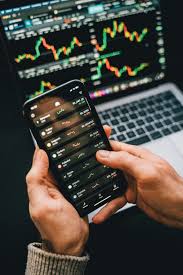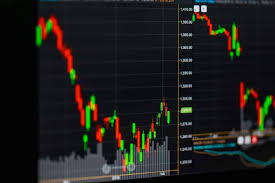Automated Trading in Forex An In-Depth Guide

Automated trading has revolutionized the Forex market, allowing traders to execute trades efficiently and accurately. The automated trading forex Online Trading CM platform provides valuable resources for traders looking to delve into automated trading strategies.
Understanding Automated Trading in Forex
Automated trading involves using software to buy and sell currencies on the Forex market based on pre-defined criteria. These automated systems, or trading algorithms, can analyze market fluctuations and execute trades faster than any human trader. This technology has opened up new ways for traders to operate, significantly reducing the potential for human error and emotional biases.
What is Forex Trading?
Forex trading, or foreign exchange trading, is the act of buying one currency while simultaneously selling another. It operates on a decentralized global market, where the value of currencies fluctuates due to various economic factors. Traders seek to profit from these fluctuations by speculating on currency price movements. With the advent of technology, manual trading has slowly paved the way for automated systems that offer numerous benefits.
Benefits of Automated Trading in Forex

- Speed: Automated trading systems can process vast amounts of data within milliseconds, enabling traders to capitalize on market opportunities that arise in an instant.
- Emotion-Free Trading: Automated systems eliminate the emotional component from trading decisions, ensuring that trades are executed based solely on predefined strategies.
- Backtesting Capabilities: Traders can test their strategies using historical data, allowing them to fine-tune their systems before deploying them in live market conditions.
- 24/7 Trading: Automated trading systems can operate around the clock, which is particularly advantageous in the Forex market that runs 24/5, capturing opportunities even when the trader is not actively monitoring the market.
- Diversification: Traders can use automated systems to diversify their trading strategies across multiple currency pairs, spreading their risk effectively.
Understanding Trading Algorithms
Trading algorithms, or automated trading strategies, are sets of rules that dictate when to enter and exit trades. These rules can be based on various indicators, technical analysis, and even fundamental analysis. Commonly used indicators in automated trading include moving averages, Relative Strength Index (RSI), and Bollinger Bands, among others.
Common Types of Automated Trading Strategies
Several types of automated trading strategies are prevalent in the Forex market:
- Trend Following: This strategy identifies and capitalizes on market trends, entering positions when favorable trends are detected.
- Mean Reversion: Mean reversion strategies are based on the idea that prices will revert to their average over time. This strategy involves buying when prices are low and selling when they are high.
- Arbitrage: This involves taking advantage of price discrepancies between different markets or currency pairs, executing trades that profit from these differences.
- Market Making: This strategy provides liquidity to the market by offering to buy and sell currencies at specific prices, profiting from the spread between buy and sell prices.
Choosing the Right Trading Platform

The choice of trading platform is crucial in automated Forex trading. Traders need to select a platform that offers reliable execution speeds, advanced charting tools, and robust support for automated trading systems. It's essential for traders to thoroughly research and test different platforms before committing to one.
Risk Management in Automated Trading
While automated trading offers numerous advantages, it is not without risk. Poorly designed algorithms or market anomalies can lead to significant losses. Effective risk management strategies, including setting stop-loss orders and position sizing, are vital for mitigating risks associated with automated trading.
The Future of Automated Forex Trading
The future of automated Forex trading seems promising, with advancements in machine learning and artificial intelligence. These technologies are expected to enhance trading strategies, making them more adaptive to changing market conditions. As more traders adopt automated systems, the competition will increase, prompting ongoing innovation and refinement in trading algorithms.
Conclusion
Automated trading in Forex has become a pivotal aspect of the trading landscape. By harnessing the power of technology, traders can execute trades with increased speed and accuracy while reducing emotions' influence on their decisions. As traders explore various automated trading strategies and platforms, they must remain vigilant about the associated risks and continuously adapt to the evolving market environment. Embracing automation can lead to a more efficient and potentially profitable trading experience.

